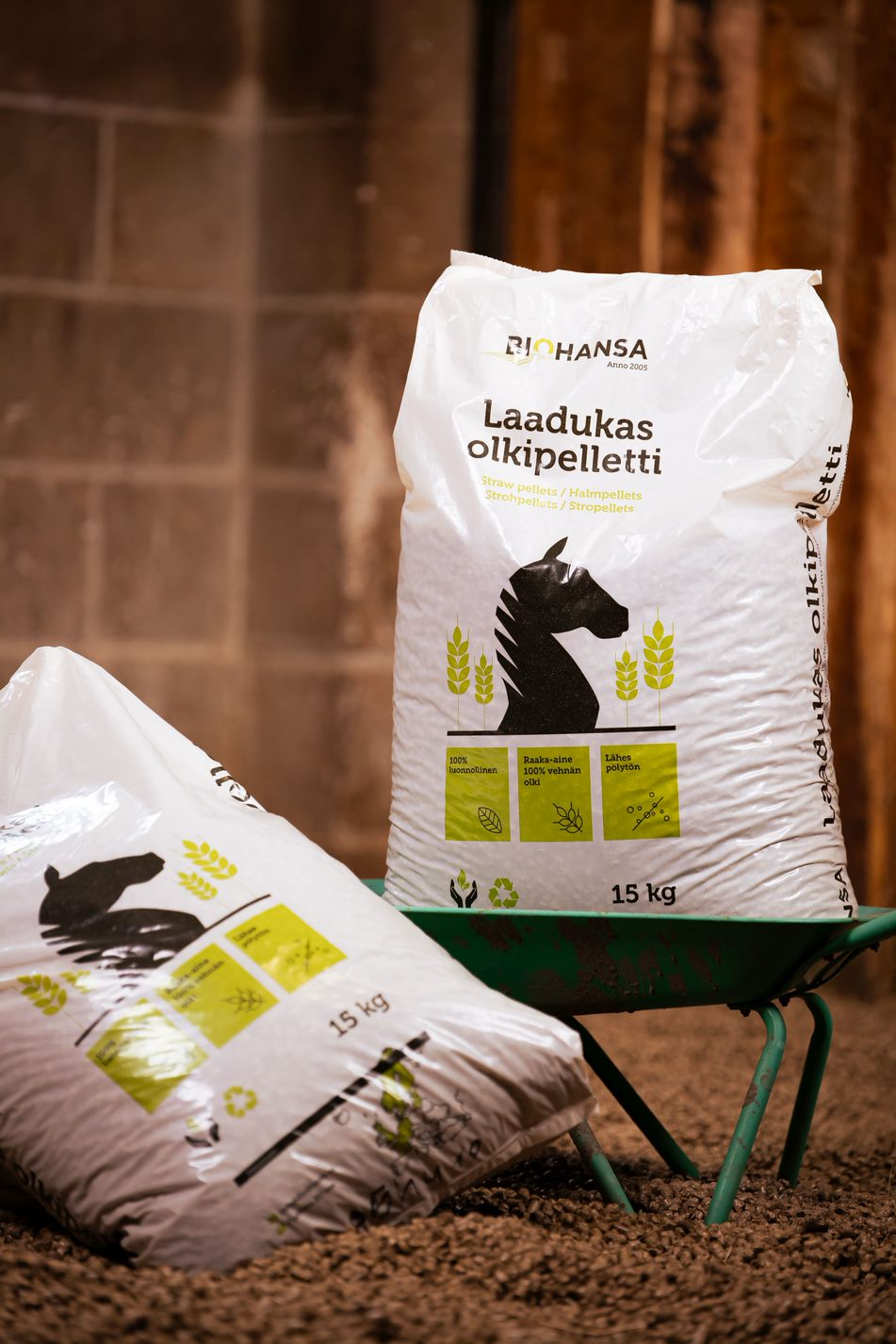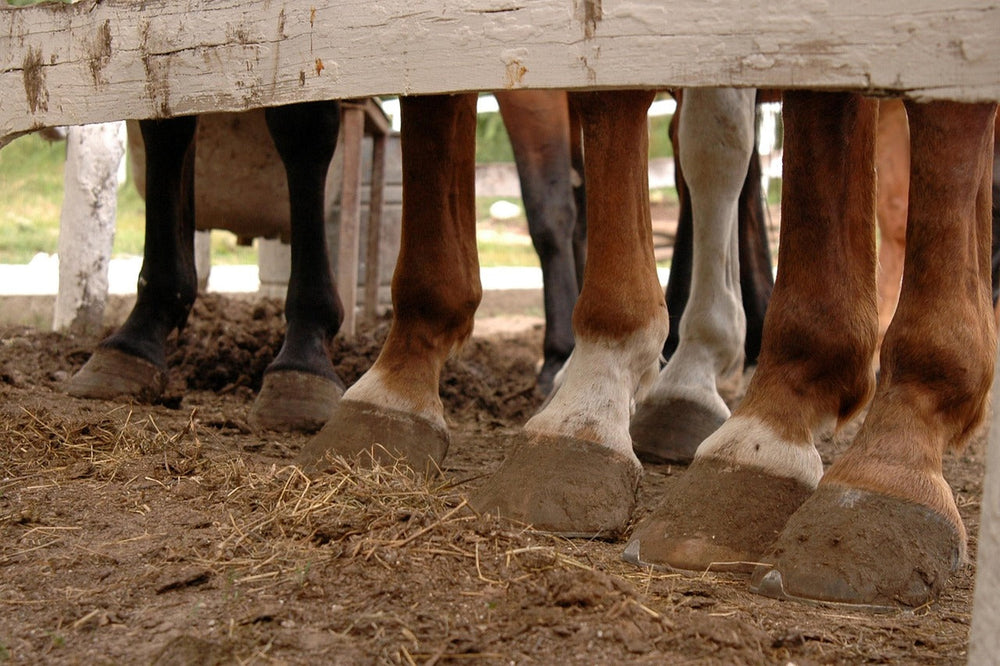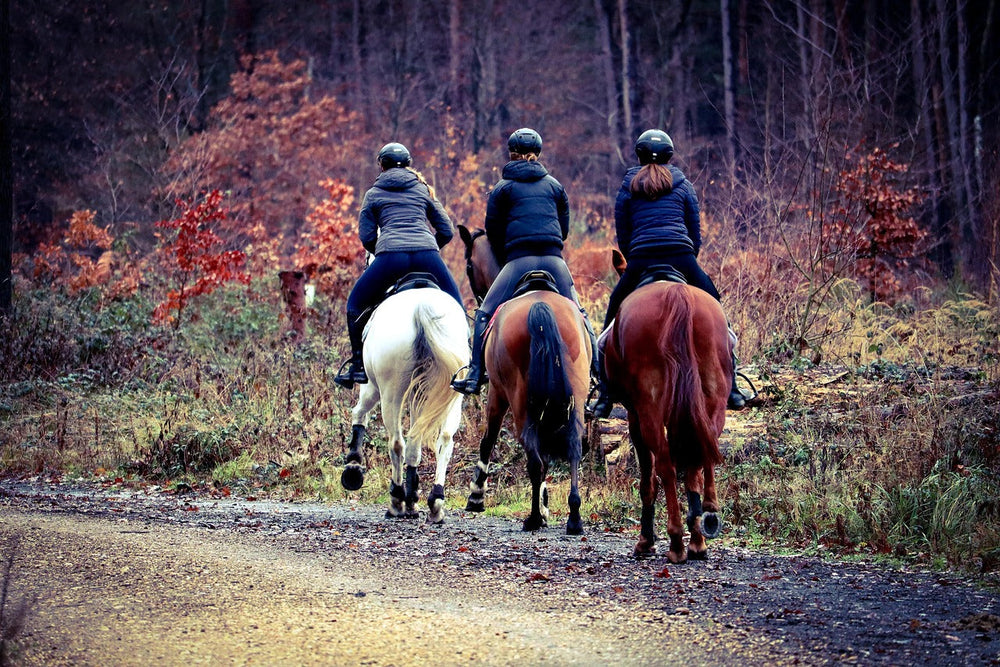Benefits of straw pellets
Straw pellets effectively absorb moisture, up to 3-4 times their own weight. This helps keep the pen dry for longer and reduces ammonia odors. The pellets expand and soften when a little water is added to them. They are also easy to spread in an even layer in the pen. Straw pellets decompose quickly in compost and produce less waste manure compared to other bedding. Straw pellets make a good organic fertilizer, as straw manure decomposes into usable material in just 2-3 weeks, making them well-suited for fields. Because straw pellets are dense, they also take up less storage space than, for example, peat or loose straw. The pellets are dust-free, making them a suitable choice for sensitive horses or allergy sufferers.Differences between straw pellet mill
An alternative to whole straw pellets is straw pellet meal . Straw pellet meal is made by crushing straw pellets into a finer mass. This product has its own special benefits, especially with horses that are greedy. Many greedy horses find pellets as tasty as feed pellets, so they may disappear from the pen at night to better mouths. Pellets themselves are not dangerous, but in the long term, pellets can cause intestinal problems and digestive upset, even to the point of flatulence. Straw pellets expand in the stomach and can cause a blockage if a horse eats them in large quantities. Pellets in the form of roughage, on the other hand, do not look so appetizing. Grit is lighter and softer than pellets, which makes it more comfortable for your horse to lie on. Although grit does not absorb moisture as effectively as pellets, it spreads more easily and remains a more even surface. In addition, the grit is particularly suitable for horses with sensitive hooves or who spend long periods of time in the stall. When using the grit for the first time, the stall floor area should be covered with a 20–50 mm thick layer of bedding. During daily cleaning, only manure and wet bedding are removed from the pen. There is no need to add bedding every day. In the future, only one bag (15 kg) is added every few days. Approximately 1400 kg of product is used per year in a 10 m² pen.
Straw pellet production
Biohansa straw pellets are made from wheat. Straw pellets are made by first collecting, drying and chopping the straw into suitable sized pieces. The straw is fed into a pellet machine, where high pressure and heat shape it into a compact pellet. The finished pellets are cooled and packed into bags. It is worth choosing straw pellet producers and sellers whose products are specifically intended for horses. This means that they meet safety standards. For example, straw that has been carelessly dried or stored may contain mold or dust that can cause respiratory problems.Disadvantages of straw pellets
Although straw pellets have many benefits, it is good to be aware of the potential disadvantages of using them. If the pellets get too wet, they can become lumpy and difficult to clean. For this reason, the pellets should also be stored in a dry place, as they are susceptible to moisture. Pellets may be more expensive than traditional bedding, such as sawdust or peat, but their efficiency can offset the costs in the long run. Straw pellets and straw pellet grit both offer excellent options for horse stable bedding. The final choice largely depends on the needs of the stable and the characteristics of the horse. Read more about bedding choices in this article. Pellets are particularly good for moisture management, while grit is suitable for greedy horses, as it is not as readily eaten as pellets. Both products are ecological and easy to use when stored and used correctly. Discover all of Biohansa's bedding products via this link. Also remember to subscribe to our newsletter and follow us on social media to receive information about new products and current topics directly to your email.






